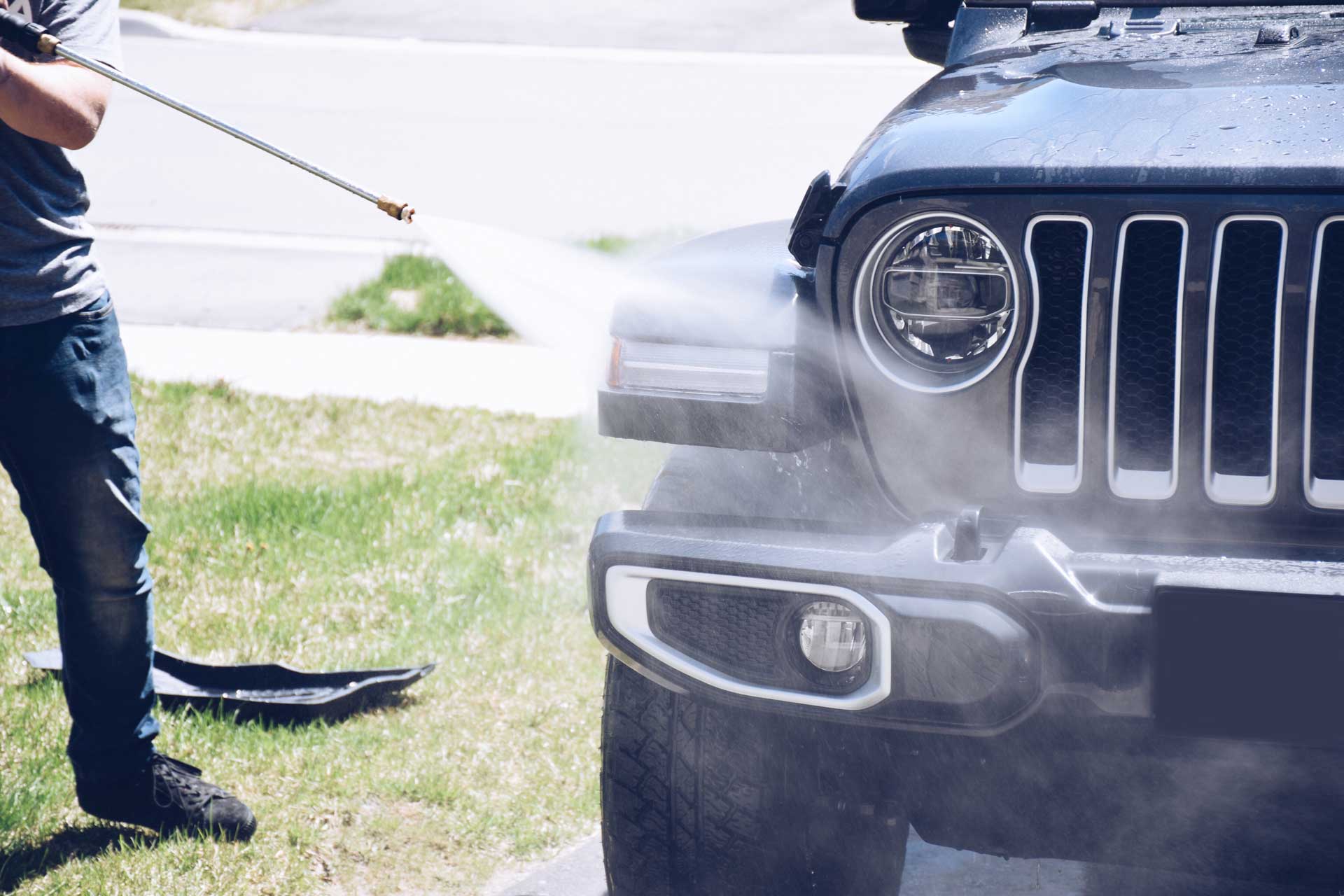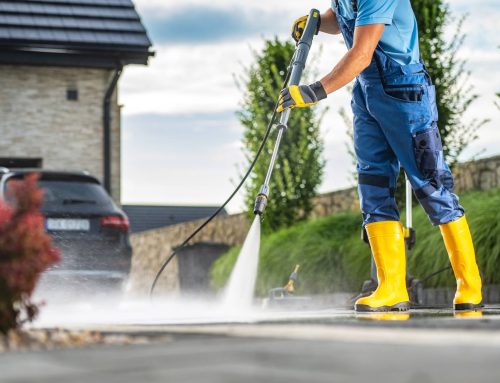Maintaining a clean and attractive fleet is a strategic decision that affects your company’s image, reputation, and overall performance in the fast-paced world of construction. We will discuss the necessity of maintaining the perfect state of your construction vehicles and equipment, as well as give you useful insights and practical recommendations to help you master the art of fleet washing.
Do you need to wash construction vehicles?
Every day, construction equipment takes a beating. Keeping your project clean is critical not just for the appearance of your project but also for the longevity of your equipment. Several reasons contribute to the need for routinely washing construction equipment. Construction equipment relies on grease to work properly, guaranteeing the smooth operation of many components. However, grease can spread and collect on the equipment surfaces over time. Regular pressure washing aids in the removal of grease buildup, keeping it from interfering with the functioning of the equipment. You can reduce the chance of problems, lengthen the life of the equipment, and maximize its output by keeping it clean.
In building projects, working with materials such as concrete or asphalt is unavoidable. Unfortunately, these compounds tend to find their way into your vehicle and equipment’s surfaces, affecting both its aesthetic and long-term functionality. If these substances are not removed, they might cause corrosion, blocked components, and poor performance. These materials are effectively removed by power washing thus eliminating any possible damage and protecting the integrity of your equipment. Your construction project’s location has a big impact on the cleanliness of your equipment. If you work in a dusty environment, your equipment and vehicles will be covered with dust on a regular basis. This not only affects the aesthetic of your equipment, but it may also have serious effects if ignored. Excessive dust accumulation can lead to overheating and early failure of critical components. Power washing eliminates dust, keeping your equipment cool, functioning, and ready for peak performance.
The benefits of a clean fleet
A clean fleet not only reflects a well-managed construction company’s high standards, but it also acts as a compelling representation of professionalism and attention to detail. Regular fleet washing has various advantages that extend beyond surface cleanliness. Let’s take a closer look at these benefits:
Improved Brand Image:
Your fleet serves as mobile advertising for your company, displaying your logo everywhere it travels. A clean and well-maintained fleet has a significant influence on the image and reputation of your company. It makes a lasting impact on clients, prospective customers, and even onlookers. When your company’s vehicles shine with cleanliness, it supports the notion that it is dependable, careful, and devoted to quality. This attention to detail in fleet management becomes an essential component of your corporate identity, building trust in your clients and distinguishing you from the competition.
Improved staff Morale:
A clean and tidy fleet does more than just look nice, it encourages a pleasant work atmosphere and enhances staff morale. Employees experience a feeling of satisfaction and ownership in their job when they climb into clean vehicles every day. It fosters a positive attitude and maintains their commitment to the organization. Employees are motivated and inspired when they see themselves as part of a professional team that emphasizes quality and cares about the image they project to the rest of the world. A clean fleet has an uplifting effect that extends beyond the cars themselves and affects the whole work culture, resulting in higher productivity, job satisfaction, and general employee well-being.
The basics of fleet washing
To build a successful fleet washing routine, it is important to lay a solid foundation by knowing and applying the fundamentals of efficient cleaning. By following these basic procedures, you can make sure that your fleet receives the attention it deserves:
Choosing the Right Cleaning Agents:
When it comes to cleaning agents for your fleet, look for high-quality solutions that strike the appropriate combination of toughness and gentleness. Look for environmentally friendly solutions that are particularly intended to remove dirt and grime without harming your vehicle’s surfaces. These cleaning chemicals should have strong cleaning capabilities to efficiently remove stubborn stains, but they should also be soft enough not to harm the paint or metal. Avoid using abrasive cleansers, which can harm or corrode the vehicle or equipment’s exterior. You can accomplish a complete and safe cleaning procedure for your fleet by utilizing the correct cleaning products.
Equipment and Tools:
Investing in professional-grade equipment is essential for achieving the best outcomes from your fleet cleaning efforts. Consider investing in high-quality power washers, which give the required power to properly remove difficult dirt and debris. Power washing is very effective for heavy-duty vehicles and equipment that gather a lot of dirt. When dealing with more sensitive surfaces, such as windows or automobile emblems, gentle brushes, and microfiber cloths are needed. These tools provide delicate but effective cleaning while avoiding scratches and damage.
Developing an effective fleet washing schedule
Establishing an effective fleet cleaning routine is a critical step in ensuring that your vehicles and equipment remain in peak condition throughout the year. You can keep ahead of dirt and grime accumulation while maintaining the aesthetic and performance of your fleet by developing a routine cleaning regimen. To start, determine the most effective cleaning frequency. Consider weather conditions, vehicle usage, and the type of construction projects when determining how frequently to wash your fleet. Different locations may have varying quantities of dust, pollutants, or road salt, which might have an influence on the cleanliness of your vehicles. If you work in an area with harsh weather or regularly encounter muddy job sites, you may need to wash your hands more frequently. As a starting point, a bi-weekly or monthly washing plan is advised. However, be adaptable and modify the frequency as needed to have a clean fleet. The next step is to prioritize consistency. Once you have decided on a frequency, it is essential to stay consistent. Regular cleaning minimizes dirt and grime buildup, making future washes faster and more efficient. Maintaining a consistent degree of cleanliness throughout your whole fleet is critical. Furthermore, it promotes a culture of cleanliness and attention to detail among your staff, instilling a feeling of discipline and professionalism.
Maintenance and longevity of your fleet
In addition to routine fleet cleaning, here are some thorough and beneficial maintenance ideas to maintain your vehicles and equipment in good shape. Routine inspections of your vehicles and equipment are vital for recognizing any symptoms of damage, wear, or possible problems. You may discover problems early and solve them quickly by including thorough inspections in your maintenance program. This preventative measure not only avoids future damage but also extends the life of your fleet. Pay special attention to wear and tear areas, such as brakes, suspension, and engine components.
Rust prevention can work effectively with frequent fleet cleaning. Rust can represent a serious danger to the structural integrity of your vehicles, particularly in construction sites where they are subjected to severe conditions. Apply a rust-resistant coating or sealer to your fleet to function as a barrier against moisture and corrosive chemicals. In addition, fix any chips or scratches in the paint as soon as possible to prevent rust from forming. A regular fleet cleaning schedule can assist remove any dirt or debris that might speed up the production of rust, ensuring that your cars remain in perfect condition.
Tire care should also be prioritized since it not only increases tire life but also improves fuel efficiency and safety. Check the tire pressure on a regular basis to verify it is within the manufacturer’s guidelines. Underinflated tires can cause uneven wear, reduced fuel economy, and poor handling. Furthermore, rotate your tires on a regular basis to encourage even wear across all tires. This technique helps them live longer and perform better overall. Finally, make sure the wheels are properly aligned since misalignment can cause uneven tire wear and severely influence steering and suspension components. Pay attention to cleaning the tires during your fleet washing program to maintain their look and avoid the development of corrosive chemicals.
A clean fleet is a strategic commercial decision in the construction industry, not merely an aesthetic option. You can reap the benefits of increased brand image, greater staff morale, and longer vehicle lifespan by setting up a regular fleet washing practice. Remember to select the proper cleaning solutions, and create an efficient washing plan. Your fleet will shine brightly with these tips and tactics, making a lasting favorable impression on clients and confirming your company’s dedication to quality.



